"GO TO IT"
Forming Up 1943-1944
The War Office issued the authority on 23 April 1943 for a second British airborne division to be raised. It was to be designated '6th', a number chosen to deceive the enemy. When 1st Airborne Division moved to North Africa in April 1943, there remained in England one newly formed parachute brigade (3rd Parachute Brigade) and a few men from units of divisional troops. From these elements, 6th Airborne Division started to form on 10 May 1943 at the start of a phased programme to be carried on throughout the year .
Five officers and one hundred men were left behind by 1st Airborne Divisional Signals. These men became the nucleus of the new 6th Airborne Divisional Signals. Lieutenant Colonel D Smallman-Tew, who had previously been the Second in Command of 1st Airborne Divisional Signals, assumed the appointment of Commanding Officer of the new unit. Divisional HQ established itself at Figheldean, Netheravon and the Divisional Signals took over Beacon Barracks in Bulford near Amesbury, Wiltshire.
Between the summer of 1943 and the spring of 1944 Signal units throughout the country were combed for volunteers for airborne duties. 5th Parachute Brigade Signal Section and 6th Airlanding Brigade Signal Section were the first to form. No 1 Company Divisional Signals followed fairly quickly.
On 9 September 1943, Her Royal Highness The Princess Royal, Colonel-in-Chief Royal Corps of Signals visited the unit in Bulford. The Princess Royal's signature is recorded in the visitors book. The signatures of Major General R Gale, Commander 6thAirborne Division, Major General G G Rawson, Inspector of Signals and General Sir H Colville B Wemyss Colonel Commandant also record this historic visit.
The return of 1st Airborne Division from Sicily and Italy in December 1943 brought new ideas on airborne organisation and equipment. One important lesson to be passed on was that line detachments must be included on the establishment of Airborne Divisional Signals. A number of officers and senior NCOs also transferred from 1st Airborne Divisional Signals bringing with them the experience that had been gained in North Africa and Sicily.
On 23 December the Division was placed under the command of the newly formed 1st Airborne Corps and was ordered to mobilize and be ready for operations by 1 February 1944. Exercise followed exercise and on 4 April 1944 the whole unit with the remainder of 6th Airborne Division took to the air in training for the first time.
6th Airborne Divisional Signals Operational Standing Orders dated May 1944 give a considerable insight to the procedures of the unit. For example:-
The responsibilities of the Pigeon Officer include the training of units of the Division in the use of pigeons for which purpose he should be provided with a static loft'.
Slit trenches will be dug and wireless sets transferred to them as soon as they are completed. The RSM will supervise digging of trenches in the Signals rest area'.
Clear, concise wireless logs will be maintained in duplicate at all wireless terminals'.
The general principle (for priority of line laying) will be to enable wireless groups to close down as soon as the line communications provide an adequate substitute'.
Lines will be labelled wherever confusion might arise'.
Lines layed through minefields will, wherever, be poled'.
DRs will not be sent through a danger area without protection'.
All water abroad, whatever the source, must be purified'.
Shallow trench latrines should be straddled in use, therefore width is important - it must not be more than one foot'.
At Appendix 2 Figure 3 is the full battle order for each man as detailed in Operational Standing Orders.
In preparation for the forthcoming Allied invasion of Europe, the Divisional sea parties moved to their marshalling areas near Winchester on 20 May. 6th Airborne Divisional Signals and all other units of 6th Airborne Division moved from Bulford on 25 May to transit camps spread across Southern England (Tarrant Rushton, Keevil, Blakehill Farm, Down Ampney, Fairford, Broadwell, Brize Norton, Harwell). The organisation of 6th Airborne Divisional Signals at this particular time was based on the organisation described in the notes on 1st Airborne Divisional Signals.
The Allied Airborne Assault on France 1944 [Operation NEPTUNE] Throughout the early summer of 1944 the Allies had been preparing for the invasion of Europe. The plan for the invasion (Operation OVERLORD) included a sea assault landing by 21 Army Group under General Montgomery on the beaches of Normandy between the mouth of the River Orne in the East and Les Dunes de Varraville some forty five miles to the West. These landings were to be preceded by an airborne assault by one British and two American airborne divisions.
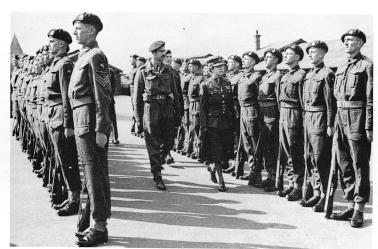
Plate 14. HRH The Princess Royal Inspecting 6th Airborne Divisional Signals 9 September 1943.
Taken at Beacon Barracks, Bulford, some six months after the Unit had been raised. Lieutenant Colonel Smallman-Tew, the Commanding Officer, accompanies HRH
By courtesy of the Trustees of the Imperial War Museum. Click to enlarge the picture.
The main task given to 6th Airborne Division was to capture the bridges over the River Orne and Caen Canal intact and to fight a holding operation to protect the left flank of the seaborne assault. US 82nd and 101st Airborne Divisions were tasked to protect the right flank.
Final preparations for D Day were carried out in secrecy in the transit camps. Loading of aircraft and briefing was completed and by the evening of 4 June 1944, 6th Airborne Division stood ready. The 6th Airborne Divisional Signals Operation Order for NEPTUNE included the following paragraph, "Operators Cards will be prepared by Sects and each card will carry full particulars of every link that is capable of being operated by the same type of set. The cards will be rolled up and concealed in the longest rod of the F type aerial. It may be removed by pushing the smallest section through. (this idea was subsequently passed on to 1st Airborne Divisional Signals for the Arnhem Operation). The same operation order identified Thorney Island and Calshott as the place where pigeons would home. In the administrative paragraphs under discipline the following stern warning was given - 'A high standard of behaviour must be maintained. Women and wine should be avoided as VD is rampant in France and drunkenness is NOT a French national pastime and drunks are regarded with contempt. All ranks will note that there are heavy penalties for looting and wilful damage'.
Major General Gales' Special Order of the Day dated 4 June 1944 was as follows: "All reports I have had from civil and military sources reflect greatest credit to all ranks for their loyal and rigid security. My final words to you are to see to it that what you gain by stealth you hold with guts. In the words of a great Captain, Pray to God and keep your powder dry. God bless you. Go to it..
Following a postponement of the launching of the invasion, 5 June was spent in final briefing and at about 2230 hours that night the first aircraft and gliders took off. Division pathfinders dropped at about 0030 hours on 6 June. The parachute troops of the Division were the first to land and with them was Lieutenant Colonel Smallman- Tew, the Commanding Officer of 6th Airborne Divisional Signals. Also amongst the parachute troops were the officers and men of 3rd and 5th Parachute Brigade Signal Sections. Amongst the first glider lift were men of No 1 Company commanded by Major Fenton.
The various objectives of the Parachute Brigades were achieved successfully. 3rd Parachute Brigade Signal Section was widely dispersed on landing and it took some while for the men to establish communications especially as a considerable amount of their equipment had been lost. The OC, Captain Wilks, landed in some marshes well to the East of the DZ and was taken prisoner. 5th Parachute Brigade Signal Section, commanded by Captain Radmore, landed almost intact and communications were quickly established although half of the Section's equipment was lost. Corporal Waters won the MM for laying a line to 7th Battalion The Parachute Regiment under cover of his own smoke grenades across the exposed bridges over the River Orne and the Canal. Corporal Waters at the time was an operator in command of a WS No 68 detachment. When he saw that the linemen had been wounded, he organised smoke grenades and covering fire and took the line across the bridges himself. He then maintained the line whilst under observed fire from the enemy. 5th Parachute Brigade Signal Section boast with pride that it was they who laid the first line in Europe following the invasion.
The gliderborne element of Divisional HQ landed some two hours after the parachutists. By 0430 hours the Divisional Signals were leaving the DZ and by 0600 hours Divisional HQ was established in the Chateau du Heaume in Le Bas de Ranville. Some of the signallers set themselves up in the stables of the Chateau. The wireless link to the airborne base back in England was through in fifteen minutes and the Divisional nets were quickly established once wireless silence was lifted at 0715 hours and as sets became available. The WS No 68 was the set used primarily by Brigade Signal Sections for communicating to battalion HQs and to the Brigade Commander's rover. WS No 12 HP worked from the Airborne base to WS No 76 at Divisional HQ.
The main glider landing took place on the evening of 6 June bringing in the men of 6 Airlanding Brigade Signal Section. Also on 6 June the seaborne landings started and soon the airborne and seaborne elements married up with each other. Thus by midnight on D Day, 6 June 1944, the Allies were poised to move out and extend the bridgehead. Signal offices and wireless sets were dug in and hundreds of miles of cable were laid, much of which was buried. Lance Corporal Woolgar won the MM near Breville for laying and maintaining his lines during heavy shelling. Both shelling and fighting had broken out on 7 June and continued thereafter. Breville was captured on 12 June and for the next two months a defensive battle was fought by the Division.
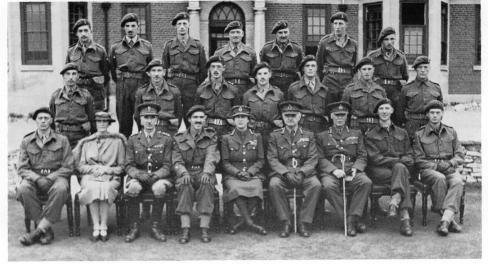
Plate 15. The Offices of 6th Airborne Divisional Signals 9 September 1943.
Taken at Bulford, on the occasion of the visit of HRH, The Princess Royal
Click to enlarge the picture. (154k)
On 25 June HQ 6th Airborne Division moved to the Ecarde escarpment where life was a little less fraught. There was even a chance for the odd swim in the canal. In the latter part of June the bridgehead had absorbed a considerable number of units into its perimeter. This density of units created considerable frequency interference problems. To make matters worse, the Germans took advantage of this situation and stepped up their jamming and deception to a degree that had not previously been experienced. However, the operators were not defeated. They were well aware that the enemy could decode air support messages in 20 minutes and so avoid being hit by our fighter ground attack. The enemy could also decide the position of our forward troops from bomb-line reports. Enemy operators were known to break-in on our nets and request information. They were also fairly successful in impersonating Commanders and issuing false orders. Major Radmore, who as a Captain at the time in command of 5th Parachute Brigade Signal Section, recalls that he tried similar tactics on the Germans. He captured a German wireless set and, with the aid of a German speaker from Brigade HQ, attempted to break into a German net. After a short time a German operator disrespectfully answered in English, "OK Tommy, out.! Line did not escape the attention of the enemy. Line circuits were intercepted and cables booby-trapped. The ambushing of enemy parties attempting to disrupt the line became a major sport. K' Section in 5th Parachute Brigade seems to have achieved a bit of a reputation for this activity mainly due to the activities of Corporal Waters who by now had been appointed by his OC to be the permanent Section Line Corporal.
On 22 July, Lieutenant Colonel Smallman-Tew, the Commanding Officer, was killed near Escoville when an enemy mortar shell hit his jeep. He was subsequently buried in the Division's cemetery at Ranville. The story of how our unique lanyard came to be adopted after the Commanding Officer's death is given at Appendix 5. Lieutenant Colonel E S Cole took over command of the unit.
At the beginning of August the Division started to push forward. Propaganda broadcasts were made by members of the Brigade Sections crawling up to the enemy's lines with loudspeakers. The broadcasts were directed at foreign conscripts and proved to be highly successful.
A Divisional rest camp was established at Riva Bella near the Canal. Men, often unwillingly, were detailed to take rest. This was just as well as the next phase of the campaign was about to start. On 17 August the Division advanced eastwards and reached the River Seine on 26 August 1944.
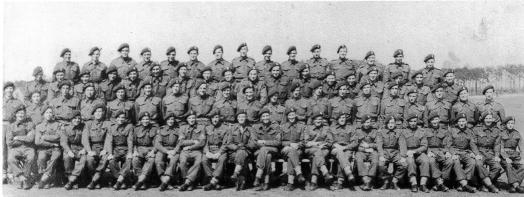
Plate 16. 5th Parachute Brigade Signal Section(K) May 1944.
Taken at Bulford, just before the Section took part in the Normandy landings on 6th June.
Click to enlarge the picture. (131k)
The advance in contact to the Seine via Troarn and Pont L' Eveque to Pont Audemer posed a new challenge to the men and equipment of 6th Airborne Divisional Signals. Airborne jeeps were rapidly turned into command vehicles. The WS No 22 was made to work over record distances and enormous backlogs of traffic had to be cleared by tired operators under the most adverse conditions. On 6 September 1944, 6th Airborne Division was withdrawn from the line and routed through Arromanches back to Beacon Barracks in Bulford by sea and rail.
Return to England 1944
After returning to England from France, October, November and December were spent in retraining and making good the deficiencies of equipment. The unit was also brought up to strength by the arrival of more volunteers. Lieutenant Colonel Cole left 6th Airborne Divisional Signals on promotion and Lieutenant Colonel P E M Bradley took over command in September .
Christmas leave 1944, however, never came about. On 22 December orders were received by the Division to deploy as reinforcements to Belgium as a result of the German offensive in the Ardennes.
Reinforcing Tasks 1945
6th Airborne Division Signals moved by road to Tilbury on Christmas Eve 1944. After crossing the Channel in LSTs, the main body landed at Ostend on Christmas Day. The unit moved in its own transport across Belgium under the Second in Command, Major G S 'Lucky' Fenton to Mettet on 26 December. The Commanding Officer and the Adjutant had driven the 500 miles to Mettet the day before. The unit went straight into action on arrival even before the equipment was completely unpacked.
The weather was exceptionally harsh with snow and ice. The heavy equipment and covered vehicles of an Infantry Divisional Signals were of course not part of the unit's scaling. 6th Airborne Divisional Signals found themselves operating as conventional forces with airborne equipment. Wireless sets were operated from jeeps and open trailers. Many of the sets developed faults largely due to the breath of the operator condensing and forming a seal of ice in the equipment. Linemen and DRs had a particularly difficult task in the freezing conditions. Corporal Evans was awarded the BEM for devotion to duty during this period.
By the middle of January 1945, the Germans had lost most of the territory that they had gained at the beginning of the counter-offensive. The Division was therefore ordered to move by road to Panningen on the River Maas in Holland. Life in Panningen was more peaceful. Most members of the unit were accommodated in some form of house or building. Training was organised and the unit telephone exchange was established in Panningen Post Office.
On 26 February the whole Division was withdrawn from Holland. The unit moved back to Beacon Barracks in Bulford and started to prepare for further operations being formulated for the final defeat of Germany.
Rhine Crossing 1945 [Operation VARSITY]
Throughout the winter of 1945 the Allies had inflicted considerable defeats on the Germans. By Spring, the Allies were poised to cross the River Rhine and thrust right into the heart of Germany. 21st Army Group planned to launch the British Second Army and US 9th Army across the River Rhine in the area of Wesel. The river was not only a formidable obstacle but its east bank was well defended in this area by the German 1st Parachute Army with, close at hand, a Panzer Corps. The plan for the crossing of the River Rhine called for an airborne assault by 6th Airborne Division and by US 17th Airborne Division behind the enemy river bank defences. This assault, which was to be in front of Second Army, aimed at preventing high ground being used by German artillery and at establishing a bridgehead which would prevent a rapid German counter attack.
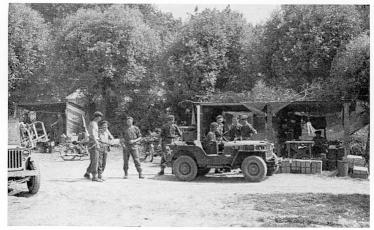
Plate 17. MT Workshop, 6th Airborne Divisional Signals August 1944
Taken at Ecarde Quarries, Normandy.
Click to enlarge the picture.
The Second Army assault was launched on the night of 23 March 1945. The airborne formations took off from England and France in the early hours of 24 March. The plan for the crossing of the Rhine was novel in that the ground forces were to precede the airborne assault. By first light 24 March the leading elements of the ground forces had crossed the river. At about 1000 hours 24 March, 3rd Parachute Brigade Signal Section landed with the rest of the Brigade near Schnappenberg on the edge of Diersfordtervald. Brigade communications were fully established within thirty minutes and links to Division were through in an hour.
5th Parachute Brigade landed just to the West of Hamminkeln. The Signal Section lost a considerable amount of its equipment. The OC, Lieutenant Crawford, was killed on the RV and a number of men were killed and missing. Corporal Landau won the MM for gallantry during this landing. Fortunately the Brigade Commander was through to his battalions in a few minutes after landing using a small set he carried with him. Brigade communications were eventually established some two hours later.
6th Airlanding Brigade landed just to the South of 5th Parachute Brigade and the Signal Section established their communications without delay. The remainder of Divisional Signals, although well scattered, established their communications and the Brigade Command Net was through to all units in twenty-five minutes.
By late afternoon on 24 March, British Second Army had linked up with 6th Airborne Division. By the same evening all communications were working including line down to Brigades. The Cipher Officer(Lt Norman Bradshaw) was unfortunately still missing and there had already been a considerable number of casualties of men and equipment. Many of the missing men in fact regrouped during the next day. 3 Officers and 63 men from the unit had been killed. By late evening Division HQ was firmly established in the Kopenhof Farmhouse. By the 29 March the Allies were poised to continue the advance into Germany.
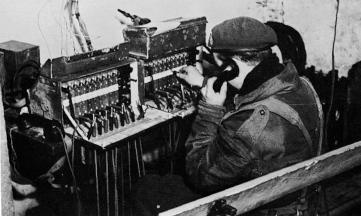
Plate 18. 5th Parachute Brigade Signals Section Exchange January 1945
Click to enlarge the picture.(104k)
Advance to the Baltic 1945
From the Rhine, 6th Airborne Division led the advance of Second Army. The advance to the Baltic followed along a 400 mile route via Osnabruck, Minden, Wunstorf, Celle, Uelzen and Luneburg. It ended on 1 May 1945 when the Division met up with the Russians at the port of Wismar on the River Elbe where it joins the Baltic Sea. Communications during the rapid advance were based in the main on wireless. Distances were enormous and it was not uncommon for leading troops to be 100 miles ahead. Relay procedures were well and truly used and German civil line was incorporated into various line routes. Line parties and DRs were constantly coming into contact with enemy stragglers. Lance Corporal Brown was awarded the BEM for his work with the DRs. Corporal Elliot was awarded the MM.
The arrival at Wismar was certainly achieved in an atmosphere of victory. The capitulation of all German forces in the 21st Army Group's area was taken on 4 May near Luneburg and the final surrender of all German land, sea and air forces took place at Reims on 7 May. Lieutenant Colonel Bradley was awarded the DSO at this time.
Return to England
On 17 May 1945, 6th Airborne Division returned to Beacon Barracks, Bulford. The strategic plan immediately after the surrender of Germany included 6th Airborne Division being deployed to the Far East and 1st Airborne Division taking on the role of Imperial Strategic Reserve. Based on this plan, 5th Parachute Brigade moved to Java in advance of the remainder of 6th Airborne Division. The Divisional Commander and an advance Division HQ also deployed to the Far East. The surrender of the Japanese on 15 August 1945 altered that plan. It was finally decided that 1st Airborne Division should disband and that 6th Airborne Division should take on the role of Imperial Strategic Reserve and should therefore be retained in the post war order of battle of the British Army.
During the months that 6th Airborne Divisional Signals had been back in England, men were sent on leave and those due for demobilization were posted to 1st Airborne Division. The unit was in turn reinforced by men from 1st Airborne Divisional Signals who were not immediately due to leave the Army.